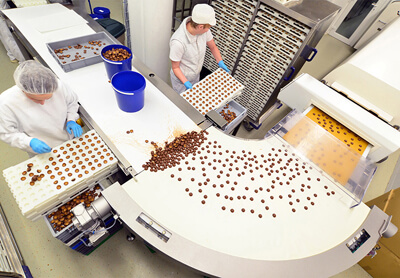Mr. Dinesh Gupta, Director, Bry-Air | Food Marketing & Technology | June 2021
The consumer pattern of buying and consuming food has evolved quite a bit. The fast food market has also proliferated in a very short time due to the fast-paced lifestyle, where consumers primarily consider the convenience and easy access to nutritious and appetizing food. The demand for snack food has drastically increased in the Indian market, over the years. This has led the F&B industry to lay increased focus on the quality, processing, and packaging of the end product and ensuring it meets the expected standards of the consumers. Due to the demand for such products, industry players are incorporating sophisticated technologies to maintain the growth fuelled by the changing consumer tastes and lifestyle.
However, given the diversity of ingredients used for a certain processed food item, and following the packaging standards it is like a default process to ensure that there is no harm or loss of key characteristics to the food item because of any external factors. However, there is one external factor that often plays the role of a party spoiler and can be torture for any producer of food and beverage items: The Moisture in the air.
To avoid the menace, food processors often use a combination of controls to reduce the moisture content of food in the production and packaging of shelf-stable products to minimise the risk of bacterial contamination and to avoid the food’s taste or appearance being altered.Just imagine, if the food you’re buying doesn’t satisfy the need than why would consumers buy the specific item. Hence, the F&B industry is laying a lot of focus on the quality, processing, and packaging of the end product and ensuring it meets the expectation standards of the consumers.

Hence, Moisture control is essential in every segment of the food industry in the spheres of storage, processing or packing. For instance, in areas near the sea belt, the humidity is higher and it is exasperating when salt from the salt shaker refuses to flow. Now, put the packaging and processing machinery in the same situation, sticky powders can interfere with the operation and obstruct the free and easy movement of the food stuff. Something as simple as an instant juice powder or drink mix becomes a double problem. Not only the powder mix lump refuses to flow smoothly in humid conditions, it also hinders the functioning of the packaging equipment.
Sugary products such as chocolates, hard candies, chewing gums, bubble gums, etc. are hygroscopic. When the humidity is high, these products regain moisture and become sticky and prone to mould formation. The other major problem faced by the confectionery industry is of uneven coating. Uncontrolled humidity/moisture during the manufacturing and coating process of confectionery (chocolates, candies, sweet snacks) is responsible for change in the structure/dimension of the film core interface, grainy and irregular coating, increase in residual moisture content and improper adhesion i.e. degradation of coating quality in the presence of moisture.
Even snack foods like potato wafers, namkeens, corn chips, noodles etc. absorb moisture from the surrounding air during processing and become soggy. Presence of moisture also results in sweating in the cooling tunnel in the packaging equipment. To keep snacks crisp and fresh, desiccant dehumidification is extremely important.During the processing of powder foods such as milk powders, spices (masalas), additives, whey powders, soup concentrates, egg powder, coffee powder etc., the presence of moisture in the air can cause lumping and caking. This affects the free and easy movement of the food and beverage powders in the processing machine and pneumatic conveyors. High humidity in the processing and packaging chambers can result into inconsistent product quality and production, longer drying time, rapid downtime and production loss.
So, moisture can have a major effect on the food industry if not managed properly, and on time. Microorganism growth is one of the main causes of potential food contamination. Moisture results in increased microorganism growth. Microbial growth and dispersal can be controlled if the surroundings and the food processing machinery and equipment inside the food processing plant and food processing facility are kept dry. But keeping a plant dry is not easy as water is an essential part of the product and process of food processing.
Hence, desiccant dehumidifiers are the biggest saviour, and all major food industries are using dehumidification as the primary solution to deal with the menace of moisture. If one adopts to a proper dehumidification process it ensures optimum humidity control as required by the process and are dependable, efficient and versatile. Dehumidification allows smooth powder flow even during periods of high humidity. Desiccant based dehumidifiers lower the moisture content of the surrounding air maintaining RH at a constant level regardless of the ambient conditions during the production, storage and packing to help improve the quality and retain the freshness of the processed food longer.
Desiccant Dehumidifier not only maintains the required humidity level but also ensures cleaner production environment, as the desiccant provided in the dehumidifier prevents microbial growth or fungal growth. The use of our systems dramatically reduce the sanitation cycle time, prevent frost and ice build-up in evaporator coils at cold storage/ freezer areas and spiral freezers. Bry-Air Desiccant Dehumidifiers are designed to comply with the most complex and critical requirements of high humidity and moisture removal/ regain during manufacturing.
Food and Beverage companies world over are deploying the innovative dehumidification technology that require minimal manual intervention, are highly energy efficient, and are extremely helpful in increasing throughput by reducing cost and time. Understanding the need for the dehumidification solution and proper implementation is saving F&B players across the globe a lot of money by minimising the risk of the stock going bad even before it reaches the food table.




